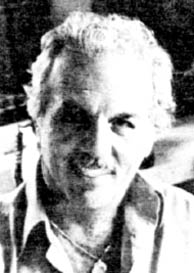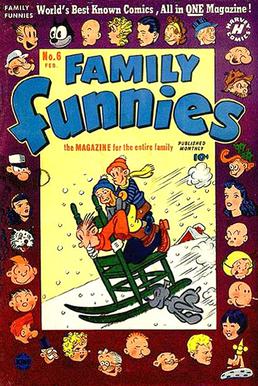
Provincetown is a New England town located at the extreme tip of Cape Cod in Barnstable County, Massachusetts, in the United States. A small coastal resort town with a year-round population of 3,664 as of the 2020 United States Census, Provincetown has a summer population as high as 60,000. Often called "P-town" or "Ptown", the locale is known as a vacation destination for its beaches, harbor, artists and tourist industry.

Terry and the Pirates is an action-adventure comic strip created by cartoonist Milton Caniff, which originally ran from October 22, 1934, to February 25, 1973. Captain Joseph Patterson, editor for the Chicago Tribune New York News Syndicate, had admired Caniff's work on the children's adventure strip Dickie Dare and hired him to create the new adventure strip, providing Caniff with the title and locale. The Dragon Lady leads the evil pirates; conflict with the pirates was diminished in priority when World War II started.

Provincetown Harbor is a large natural harbor located in the town of Provincetown, Massachusetts. The harbor is mostly 30 to 90 feet deep and stretches roughly 1 mile (1.6 km) from northwest to southeast and 2 miles (3.2 km) from northeast to southwest – one large, deep basin with no dredged channel necessary for boats to enter and exit.

Milton Arthur Paul Caniff was an American cartoonist known for the Terry and the Pirates and Steve Canyon comic strips.

Samuel Bell Waugh was a 19th-century American portrait, landscape, and moving panorama painter. His portrait subjects included Presidents Abraham Lincoln and Ulysses S. Grant.
PM was a liberal-leaning daily newspaper published in New York City by Ralph Ingersoll from June 1940 to June 1948 and financed by Chicago millionaire Marshall Field III.

Charles Webster Hawthorne was an American portrait and genre painter and a noted teacher who founded the Cape Cod School of Art in 1899.

Russell Patterson was an American cartoonist, illustrator and scenic designer. Patterson's art deco magazine illustrations helped develop and promote the idea of the 1920s and 1930s fashion style known as the flapper.

Dickie Dare was an adventure comic strip syndicated by AP Newsfeatures. Launched July 31, 1933, it was the first comic strip created by Milton Caniff before he began Terry and the Pirates. The strip ended on October 12, 1957.

Francis A. "Fran" Matera was an American comic strip artist best known for his King Features Syndicate adventure strip Steve Roper and Mike Nomad from 1984 to 2004. In addition to his extensive experience in newspaper strips, Matera also spent many years in the comic book industry, particularly for Charlton Comics. His influences include Hal Foster, Alex Raymond, Milton Caniff, Al Capp, and Bud Fisher.

Toots and Casper is a family comic strip by Jimmy Murphy, distributed to newspapers for 38 years by King Features Syndicate, from December 17, 1918 to December 30, 1956. The strip spawned many merchandising tie-ins, including books, dolls, paper dolls, pins, bisque nodders and comic books.

Bruce Gentry was an aviation adventure comic strip by Ray Bailey, distributed by the Post-Hall Syndicate. It debuted March 25, 1945, and by July the strip had expanded to 35 newspapers.

Clifford Sterrett was an American cartoonist best known as the creator of the comic strip Polly and Her Pals.

Art Instruction Schools, better known to many as Art Instruction, Inc., was a home study correspondence course providing training in cartooning and illustration. The company was located in Minneapolis, Minnesota.

James Robert Williams was a Canadian cartoonist who signed his work J. R. Williams. He was best known for his long-run daily syndicated panel Out Our Way. As noted by Coulton Waugh in his 1947 book The Comics, anecdotal evidence indicated that more Williams' cartoons were clipped and saved than were other newspaper comics. A newspaper promotion of 1930 compared him to poets Eugene Field and James Whitcomb Riley.

Kenneth Frederick Ernst was a US comic book and comic strip artist. He is most notable for his work on the popular and long-running comic strip Mary Worth from 1942 to 1985. With his realistic style, uncommon in those early years, Ernst paved the way for soap opera strips that followed.

AP Newsfeatures, also AP Features, was the cartoon and comic strip division of Associated Press, which syndicated strips from 1930 to the early 1960s.
Peter Gee (1932–2005) was a British-born artist and developer who spent most of his life living and working in New York City. He was active in the pop art movement of the 60s.

Vernon B. Smith (1894-1969), was an American regional artist, often associated with Cape Cod. He was a Federal Art Project regional administrator and as an artist he was best known for his bas-relief woodcarvings. His works also include oil paintings, watercolors, batik designs, and constructions in aluminum.
William Raphael Louis Dwyer, Jr., known as Bil Dwyer, was an American cartoonist and humorist. He was known for several newspaper comic strips in the 1930s and 1950s, including Dumb Dora and Sandy Hill, as well as a series of humorous books of Southern slang published in the 1970s.





















